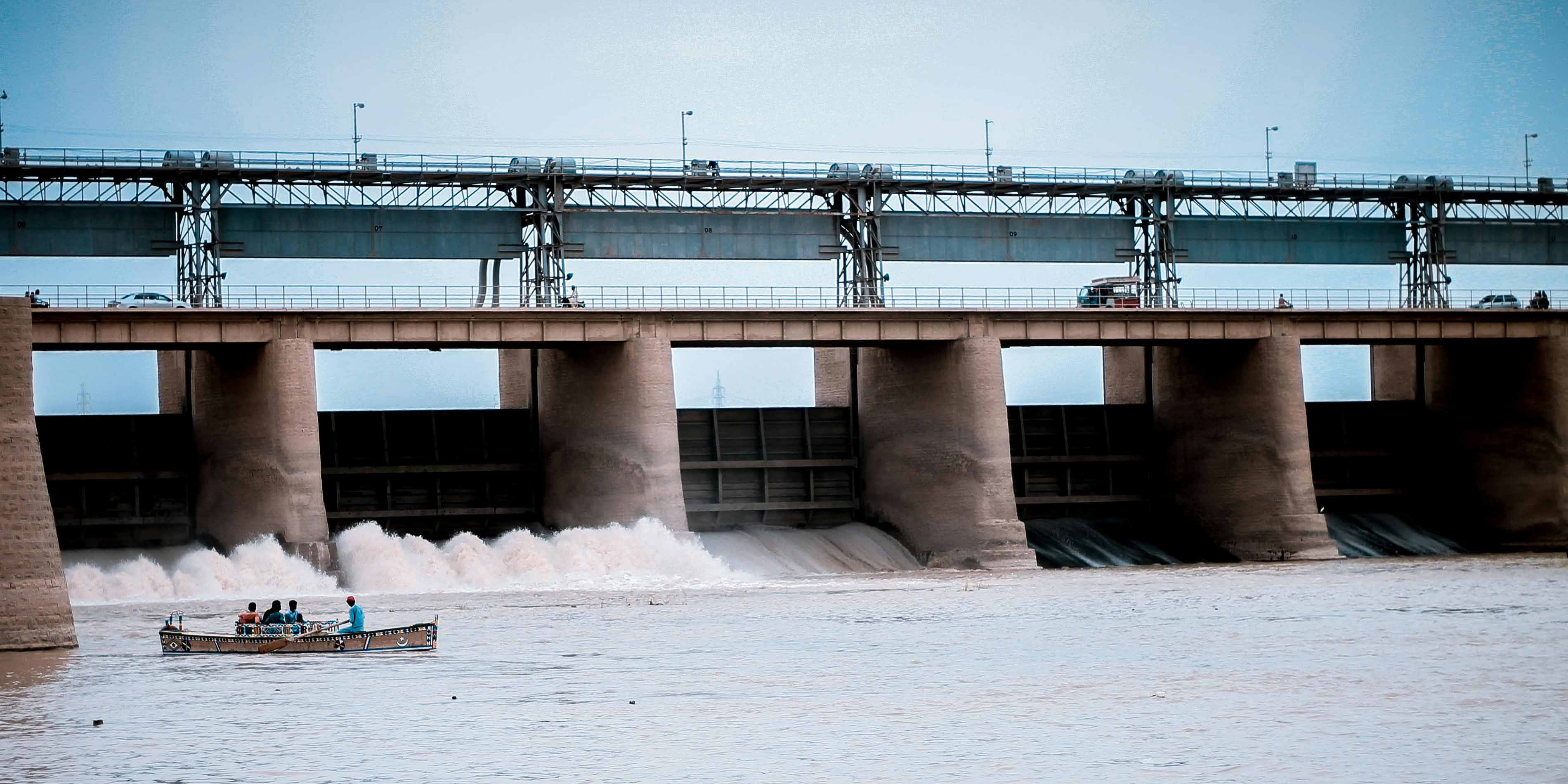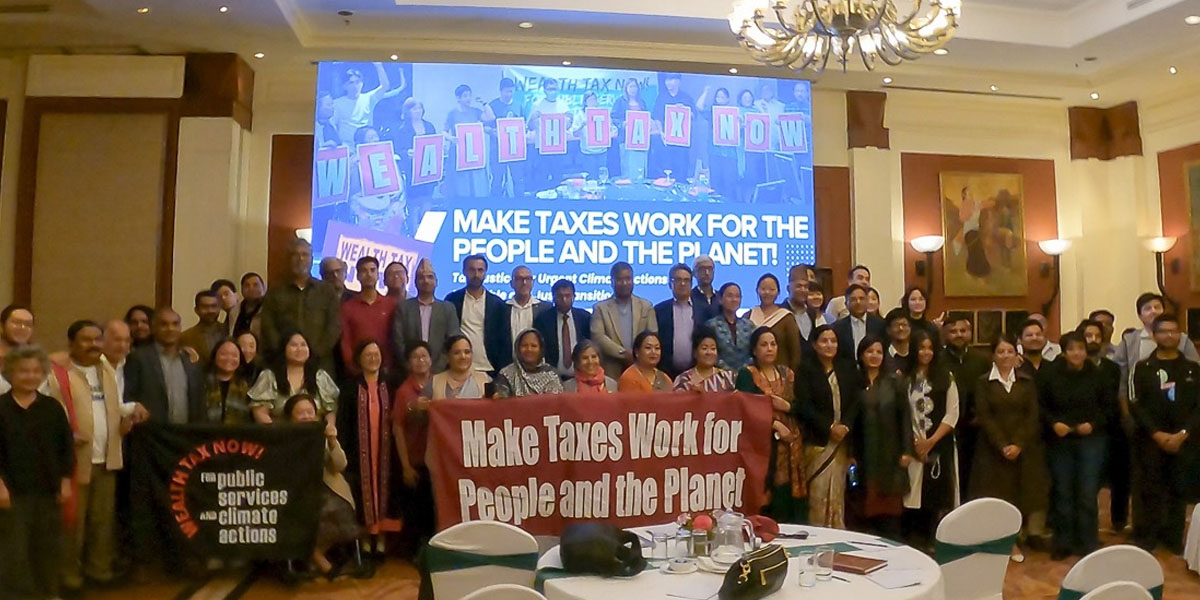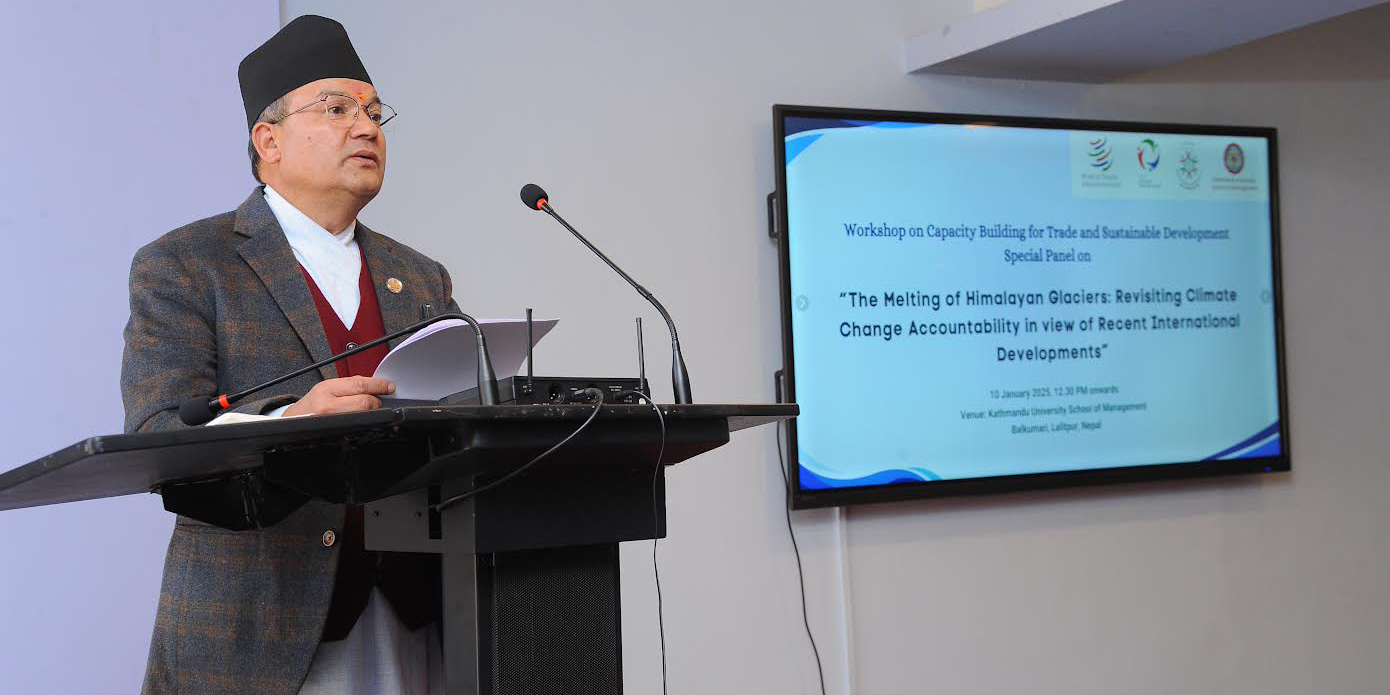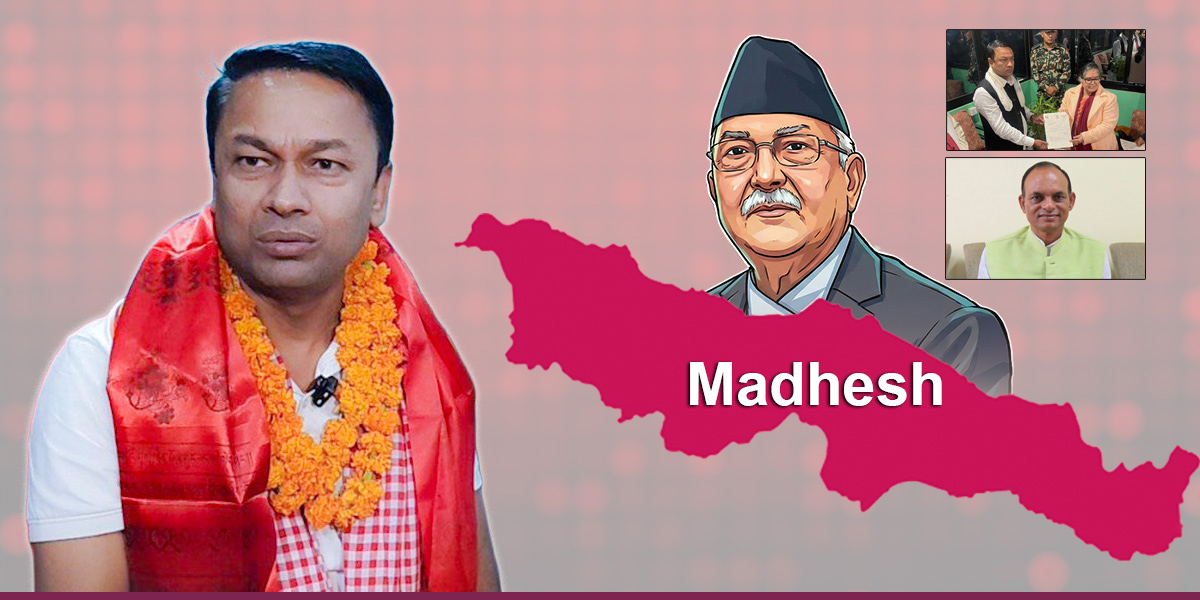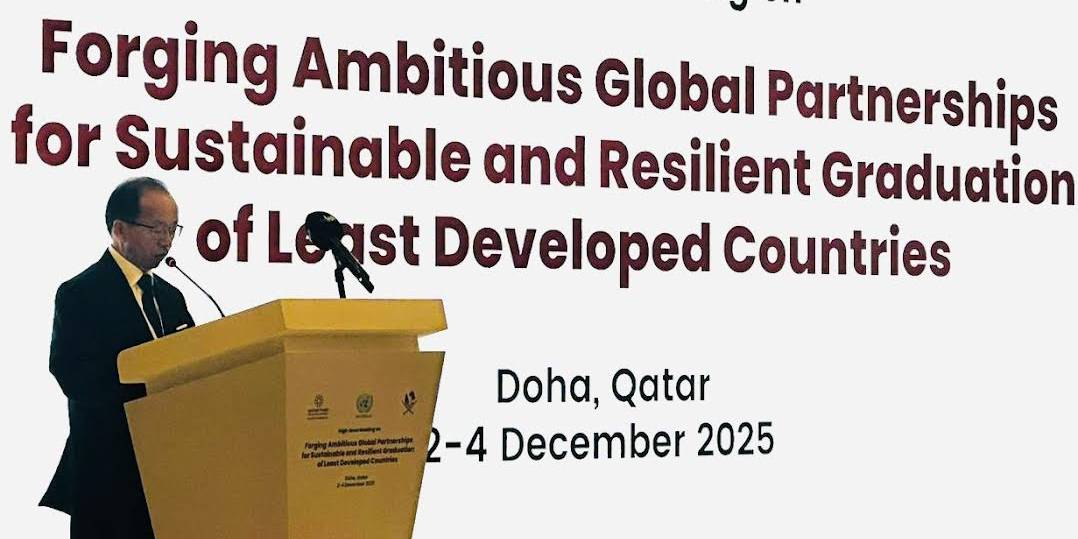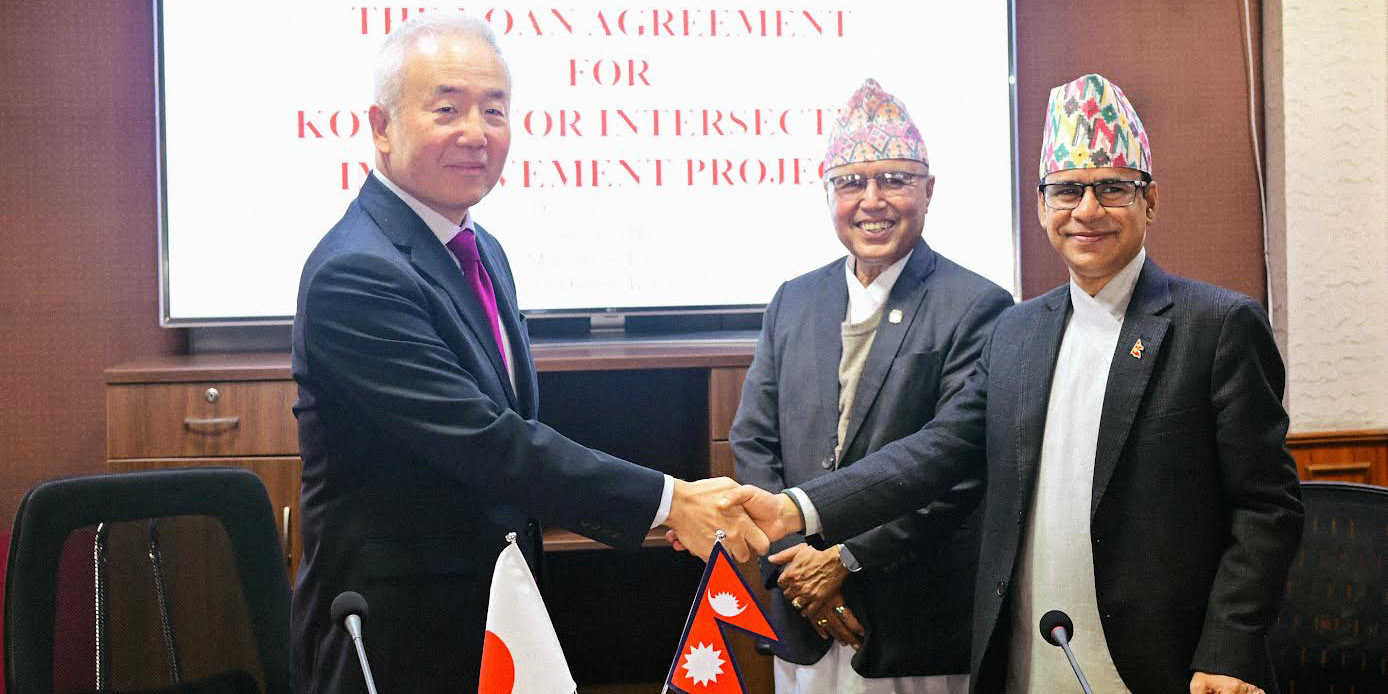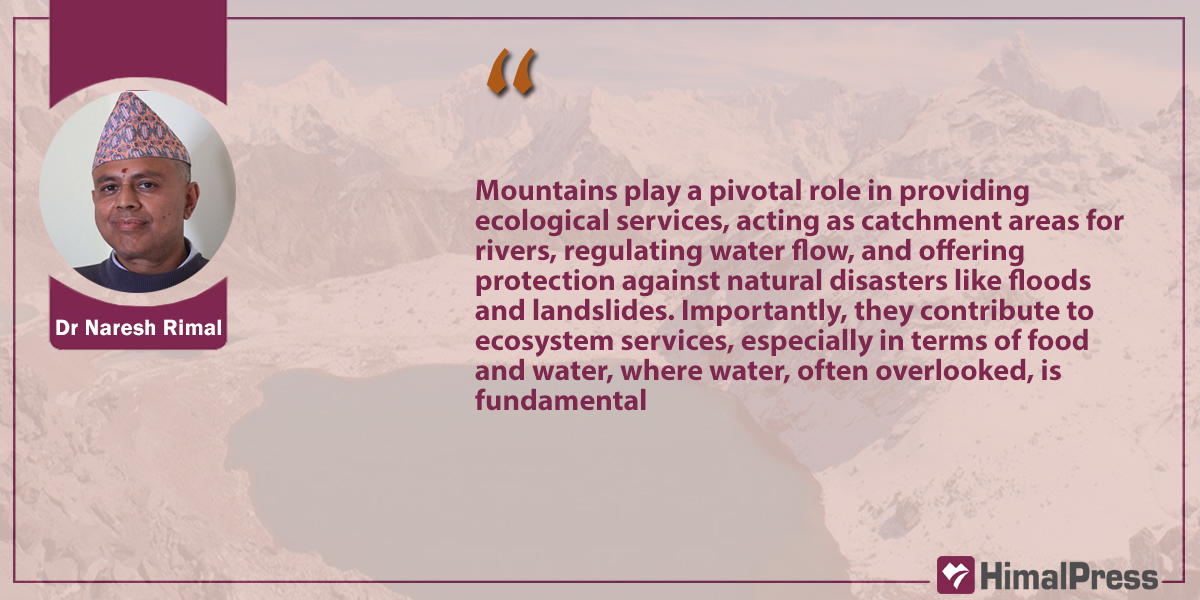
In the face of alarming trends in the destruction of mountains in the Hindu Kush Himalayas—manifested through melting glaciers, widespread land and soil degradation, bleeding of natural springs, and disruption of water systems due to extensive bulldozer use—the significance of Govardhan Puja resonates profoundly. This Hindu festival, observed on the fourth day of Tihar, typically falls on the first day of the Hindu calendar month of Kartik, and is also known as Annakut Puja. It involves the veneration of Govardhan Hill, symbolically constructed from an array of food items. In Nepal, Govardhan Puja is intertwined with the evolutionary journey of humanity—transitioning from wanderers to early domesticators of animals. Just as the cow embodies primal survival instincts, Govardhan Puja mirrors the utilization of oxen for plowing, cultivating, and sustaining life, a practice deeply attuned to environmental harmony.
The narrative behind Govardhan Puja is intricately woven with Lord Krishna, as recounted in the Bhagavata Purana. In times past, the inhabitants of Vrindavan performed elaborate rituals to worship Lord Indra, the god of rain. However, Lord Krishna advised them to cease these offerings to Indra and instead revere Govardhan Hill, which generously provided abundant natural resources. This counsel irked Lord Indra, prompting him to unleash heavy rain and storms upon Vrindavan. In response, Lord Krishna lifted Govardhan Hill with his little finger to shelter the people and animals—an act commemorated during Govardhan Puja. It symbolizes the triumph of devotion and righteousness over the arrogance of power, emphasizing the need for those in positions of authority to understand proper usage and prioritize people’s needs. It prompts contemplation on the governance structures in places like Nepal and other societies globally.
During Govardhan Puja, devotees create a symbolic mound of food representing Govardhan Hill, adorning it with various culinary offerings. Food, as a product of the interaction between the five elements in the land, holds special significance. These offerings are then presented to the deities, and participants engage in a communal meal called Annakut, featuring an array of vegetarian dishes.
This festival serves as a time to express gratitude for the gifts of nature and acknowledge the vital importance of living in harmony with the environment. Primarily observed in northern South Asia, particularly in parts of Nepal and India, Govardhan Puja encourages reflection on ecological balance and sustainable coexistence with the natural world.
Shifting to concerns about mountain and hill destruction in Nepal, these issues resonate with broader global discussions on environmental degradation and its association with climate change. Have we adequately addressed areas where positive interventions, such as in water, soil, and forest conservation, can be made? Mountains, as emphasized, play a pivotal role in providing ecological services, acting as catchment areas for rivers, regulating water flow, and offering protection against natural disasters like floods and landslides. Importantly, they contribute to ecosystem services, especially in terms of food and water, where water, often overlooked, is fundamental.
The consequences of unchecked development, fueled by political greed, bureaucratic malgovernance, and educational poverty, are indeed alarming. The unbridled use of heavy machinery, particularly bulldozers, in the pursuit of progress without due consideration for environmental sustainability can lead to severe consequences, including deforestation, soil erosion, bleeding of the soil, and disruption of natural water systems. This results in ecological imbalance and disasters like floods and landslides, impacting human subsistence.
The mention of the Melamchi River in Nepal (2021) and Glacial Lake Outburst Flood (GLOF) in Sikkim, India (2023), and other repeated disasters in Nepal and the region serve as a stark reminder of the need for a thoughtful and sustainable approach to development in a systemic way. It underscores the importance of understanding the delicate balance between economic development and environmental conservation, urging policymakers to reevaluate development priorities and strategies. This involves not only considering what to develop but also how and when to do so. The term “greed-enmeshed development” encapsulates the need for a paradigm shift. Development should not be pursued blindly for short-term gains, personal interests, or political decisions lacking foresight. Instead, it should prioritize the long-term well-being of both the environment and the communities inhabiting these regions.
Addressing these challenges requires promoting sustainable development practices, integrating effective environmental impact assessments into projects, and fostering a culture of responsible socio-ecological governance. Simultaneously, addressing educational poverty by raising awareness about environmental conservation and sustainable development practices empowers communities to actively participate in preserving their natural surroundings. The increasing scholarly outputs in recent decades stress the need for acknowledging the cultural-spiritual importance of protecting ecological economics, holding firm to cultural practices beyond mere “rituals” that are often disregarded and negatively connoted in the pursuit of so-called “modernity.” These practices, upheld by our ancestors, preserve socio-ecological order and nuances.
The mention of the Melamchi River in Nepal (2021) and Glacial Lake Outburst Flood (GLOF) in Sikkim, India (2023), and other repeated disasters in Nepal and the region serve as a stark reminder of the need for a thoughtful and sustainable approach to development in a systemic way.
The issues faced in Nepal serve as a potent reminder of the critical importance of balancing development with environmental preservation. A holistic and sustainable approach, coupled with responsible governance and an informed citizenry, is indispensable for creating a future where progress aligns harmoniously with the protection of the natural world. While “Earth Day” is bureaucratically celebrated, it is equally important to honor the festivals and celebrations set forth by our ancestors, often dismissed as “rituals” by those seeking comfort in modernity, as they carry cultural and ecological significance.
The following passage illustrates a significant instance of the growing prevalence of the “bureaucratization of politics” and the “politicization of bureaucracy” within society. The recent occurrence involving elected officials in Nepal expressing approval through applause and desk-dabbing during the UN Secretary-General’s discussion underscores a potential disjunction between political rhetoric and practical actions. The enthusiastic response of parliamentarians to the Secretary-General’s plea for increased funding to address climate change in Nepal raises questions about the authenticity of their commitment to the cause.
While recognizing the importance of the Secretary-General’s visit to Nepal, the timing, juxtaposed with global developments in the Middle East, prompts considerations regarding the prioritization of global issues. The symbolic weight attributed to the communication from the Everest base camp, emphasizing the urgency of climate change action, is duly acknowledged. However, uncertainties emerge regarding the concrete impact of these symbolic gestures in eliciting substantial commitments from nations. The acknowledgment of Nepal’s efforts in combating climate change during the visit is perceived as an endorsement by the UN Secretary-General, despite lingering concerns about political and bureaucratic malgovernance highlighted by Transparency International. This endorsement appears to bolster political groups facing criticism for their governance practices.
The standing ovation from Nepali parliamentarians in response to the Secretary-General’s call for funding raises doubts about the depth of their commitment and understanding of climate change. The displayed enthusiasm may be influenced by factors beyond a genuine concern for the environment, such as political dynamics and optics. Furthermore, media engagement with political leaders lacking a substantial track record on climate change implies that the discourse surrounding the Secretary-General’s statements may not consistently reflect a sincere commitment to addressing environmental challenges. Instead, it might be part of a broader rhetorical ecosystem serving agendas beyond environmental concerns. This raises apprehensions about the authenticity and efficacy of efforts to address climate change, encompassing global leadership, national politics, and media involvement. The dominance of global political and bureaucratic forces over cultural-spiritual aspects, at times disowned by compassion-based societies, adds a layer of complexity to these dynamics. The question arises: Are we prepared to absorb the complexities inherent in our society, transcending the tendency to perceive isolated parts as distinct entities and embracing a holistic understanding of the entire societal framework, akin to comprehending the elephant as a whole rather than fragmented components?
(Dr Rimal is the Course Coordinator of Armed Police Force, Nepal Command & Staff College)



